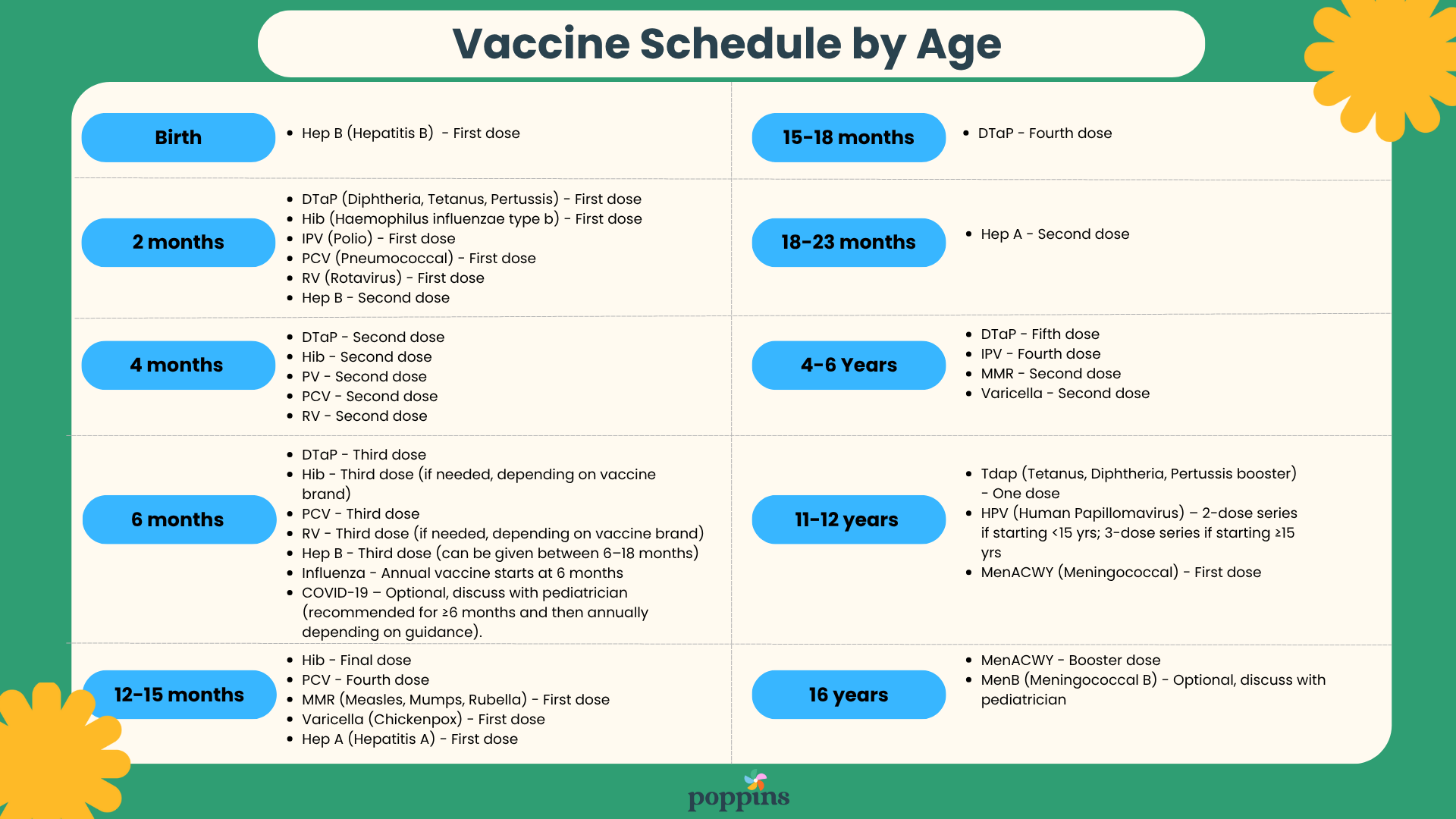

What is it? Vaccines train your child’s immune system to recognize and fight germs before they cause serious illness. They give the body a “practice round” so it knows what to do if it meets the real infection later.
Common Types
Type 1: Routine Childhood Vaccines
Protect against diseases like hepatitis B, polio, diphtheria, tetanus, pertussis (whooping cough), Hib, pneumococcus, measles, mumps, rubella, varicella (chickenpox), influenza, COVID-19, and HPV.
Subtypes/details: Combination vaccines (for example Pediarix, Pentacel, Vaxelis) can reduce the number of injections.
Type 2: Seasonal & Special Vaccines
Include influenza (yearly), COVID-19, and RSV protection (maternal vaccine or infant antibody).
Subtypes/details: Some vaccines are recommended before travel or for certain health conditions.
✅ You can manage your child’s post-vaccine symptoms at home when:
🏠Home remedies for post-vaccine discomfort:
📱Contact us again when:
🩺 Go to an in-person appointment when:
🚨Seek immediate emergency care if your child is:

Are vaccines safe?
Yes — they go through extensive testing before approval and continuous safety monitoring afterward through systems like VAERS and the Vaccine Safety Datalink. Most reactions are mild and short-lived.
Do vaccines cause autism?
No. Decades of large studies and reviews show no link between vaccines and autism.
Why so many shots so young?
Infants are most at risk for severe diseases. The schedule protects them early — delaying only increases vulnerability.
Can my child get multiple vaccines at once?
Yes. It’s safe and helps ensure your child is fully protected on time.
Can vaccines overwhelm the immune system?
No. Even combined, today’s vaccines use less than 0.1 % of your child’s immune capacity.
Why vaccinate against rare diseases?
Because vaccines made them rare — not gone. Outbreaks can return quickly when vaccination rates drop.
What about aluminum or thimerosal?
Aluminum strengthens the immune response and is used in very small amounts. Thimerosal (a preservative) has been removed from nearly all routine childhood vaccines.
What if my child falls behind?
You never restart a vaccine series. The CDC catch-up schedule safely resumes protection without repeating doses unnecessarily.
Is it safe to vaccinate with a cold or on antibiotics?
Yes. Mild illness or antibiotic use is not a reason to delay vaccines.
What if my child has a reaction?
Mild redness, swelling, or low-grade fever are common and short-lived. Severe allergic reactions are extremely rare — about 1 in a million doses. If your child has trouble breathing, persistent vomiting, or swelling of the face or throat, seek emergency care immediately.
Why do some vaccines require boosters?
Immunity can fade over time. Boosters “remind” the immune system and keep protection strong through childhood and beyond.
If your gut tells you something is wrong, don’t hesitate to reach out.Need help? Reconnect with our on-demand Poppins medical team available 24/7.